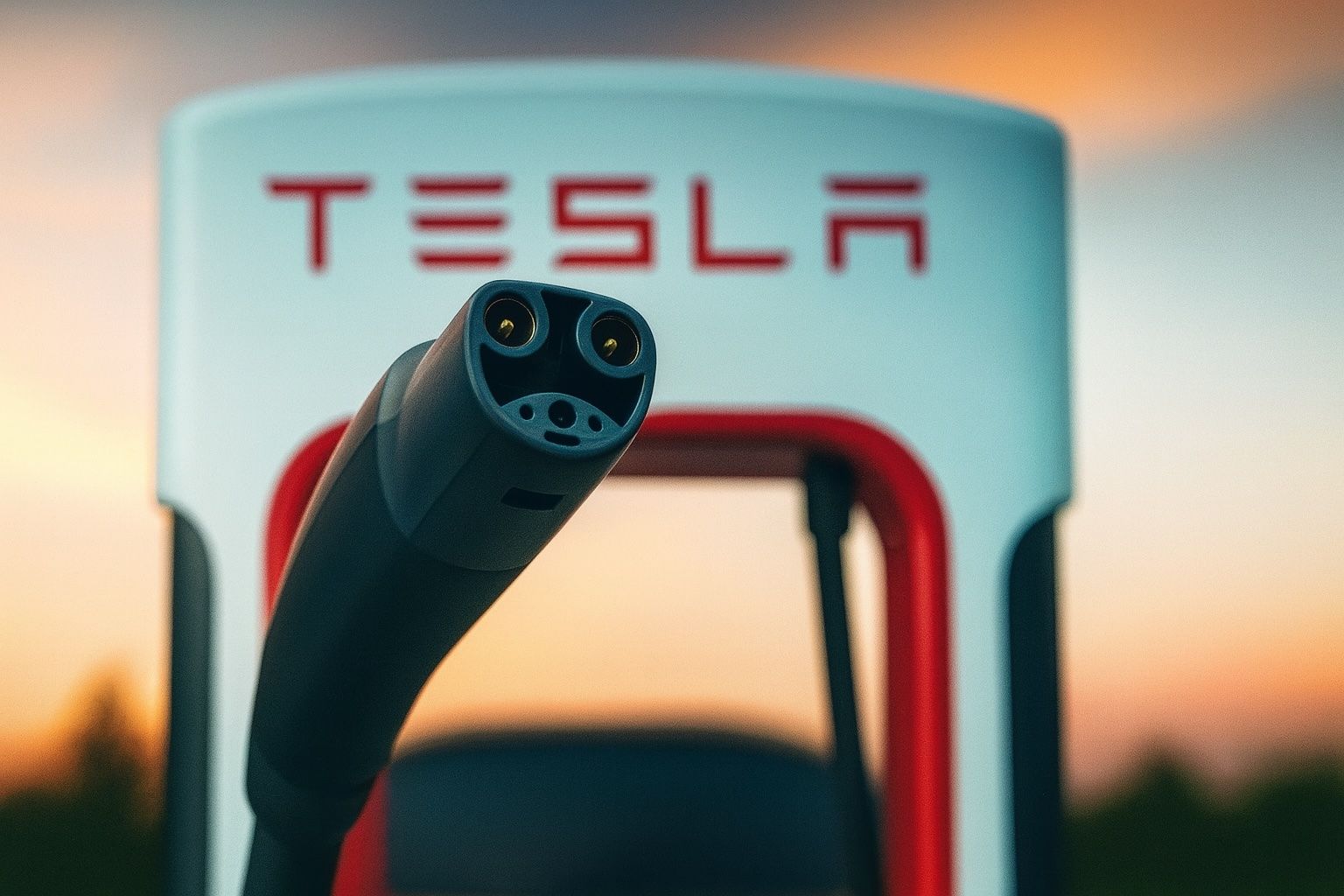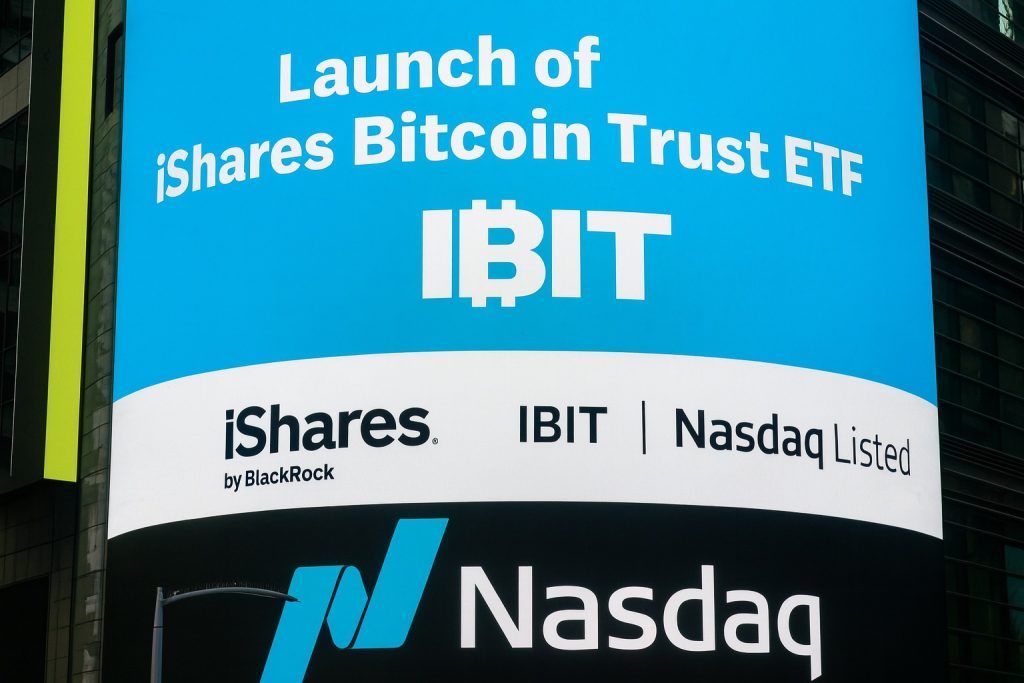- Stock Swings: Tesla (TSLA) traded around $429 per share on Oct. 17, just below its 52-week high (~$453 on Oct. 6) [1]. The stock has seesawed in recent sessions – it surged ~5% on Oct. 13 then dipped ~1.5% on Oct. 14 [2]. Year-to-date, TSLA remains a standout, up roughly 80% vs. the S&P 500’s ~17% gain [3].
- Record Q3 Deliveries: Tesla delivered 497,099 vehicles in Q3 2025, a quarterly record and about +7.4% year-on-year [4]. This blew past Wall Street’s ~443k estimate [5], thanks largely to a late-quarter rush to beat an expiring $7,500 U.S. EV tax credit [6]. CEO Elon Musk’s team leaned on discounts and deals to boost sales, effectively pulling forward demand that might leave a gap in Q4 [7].
- “Affordable” Models Debut: In early October, Tesla launched new lower-cost “Standard Range” trims for the Model 3 sedan (~$36,990) and Model Y SUV (~$39,990) [8]. These “budget” EV versions cut some features (smaller battery, no Autosteer) to hit the lower price point. However, the modest $4–5K price cut underwhelmed investors – TSLA stock tumbled ~4% after the Oct. 7 announcement [9] [10].
- Wall Street Split on TSLA: Analysts remain sharply divided. Top Tesla bulls like Wedbush’s Dan Ives see 12-month targets up to $600, and Morgan Stanley reiterates an Overweight at ~$410 [11] [12]. But others are far more cautious: HSBC has a $127 bearish target (over 70% below current levels) [13], and the average analyst target is only ~$360, implying downside risk [14]. Roughly half of analysts now rate Tesla “Hold” or “Sell.”
- Headwinds – Regulation & Rivals: U.S. regulators just opened a probe into ~2.9 million Teslas over reports that its Full Self-Driving (FSD) system can run red lights and violate traffic laws [15]. News of the investigation (announced Oct. 9) knocked TSLA shares about 2% lower intraday [16]. Meanwhile, competition is intensifying: Tesla’s EV market share is under pressure from Chinese players like BYD and legacy automakers (GM, Ford, VW, etc.) expanding their EV lineups. In Europe, Tesla’s sales fell ~22% in August, shrinking its EV market share to only ~1.5% [17].
- Next Catalyst – Earnings: All eyes are on Tesla’s Q3 earnings report, due Oct. 22. Investors are watching whether the delivery boom translated into strong revenue and profits or if price cuts squeezed margins [18]. Tesla had warned of “a few rough quarters” after subsidies end [19], so its outlook and any updates on new products (e.g. the Cybertruck or a future sub-$30K model) will be crucial.
Tesla Stock on Oct 18: Recent Performance
As of this weekend (Oct. 18, 2025), Tesla’s stock is hovering in the high-$420s per share, just shy of the peaks it hit earlier in the month [20]. On Oct. 6, TSLA reached roughly $453, a 52-week high, before pulling back amid profit-taking [21]. The past week saw notable volatility: shares jumped about 5% on Oct. 13 to ~$436, then slid ~1.5% on Oct. 14 to the $429 range [22]. By Friday’s close, the stock was relatively flat in the mid-$420s. Despite these swings, Tesla has dramatically outperformed the broader market in 2025 – the stock has surged about 80% in the past year, dwarfing the S&P 500’s ~17% gain over the same period [23].
Broader market forces have contributed to the choppiness. A mid-week tech rally on hopes of lower interest rates (the S&P 500 jumped +1.6% on Oct. 13) reversed the next day as bond yields rose and U.S.–China trade jitters resurfaced [24]. Tesla, as a high-growth tech/auto name, mirrored these moves. Investors are betting that the Federal Reserve may cut rates by year-end, a potential boost for growth stocks like TSLA [25]. However, any negative headlines – from macroeconomic worries to company-specific news – have tended to trigger outsized moves in Tesla’s share price. In short, TSLA remains as volatile as ever, with traders quick to react to each new development.
Record Sales Fuel Optimism, But Q4 Risks Loom
Tesla’s third-quarter vehicle deliveries smashed expectations, providing a jolt of good news for the stock. The company delivered 497,099 vehicles in Q3 2025, its highest quarter ever and well above consensus forecasts (~443,000) [26]. Deliveries grew about 7.4% year-on-year, a robust growth rate for an automaker of Tesla’s scale. Crucially, this beat was driven by a one-time factor: a late-quarter scramble by U.S. buyers to claim a $7,500 federal EV tax credit before it expired on Sept. 30 [27]. Tesla aggressively promoted discounts, financing deals and even social media ads to capitalize on the expiring incentive [28] [29]. The strategy worked, pulling a wave of demand into Q3.
However, that success could be a double-edged sword. By pulling forward so many sales, Tesla may face a “demand air pocket” in Q4 now that the subsidy has vanished [30]. “The $7,500 credit definitely…pulled forward demand this quarter,” observed Ken Mahoney, CEO of Mahoney Asset Management (a Tesla shareholder). He warned the credit’s expiry “could leave a U.S. demand gap in the fourth quarter.” [31] Likewise, Evolve ETFs’ CIO Elliot Johnson cautioned that the Q3 spike might not be sustainable: “I’m skeptical that this will be sustainable and I think we could see a soft couple of quarters” ahead as the post-incentive lull sets in [32]. Indeed, Tesla’s own management guided in July that it expected “a few rough quarters” once EV subsidies disappear, until benefits from its self-driving software and other initiatives ramp up next year [33].
The record sales have nonetheless bolstered Tesla’s top-line growth and showcased its ability to deliver volume. Nearly half a million vehicles in a quarter is a feat no other EV maker has achieved [34]. Beyond cars, Tesla’s energy division notched a record 12.5 GWh of battery storage deployments in Q3, marking progress in diversifying revenue beyond auto sales [35]. These positives have set an upbeat backdrop heading into earnings. Tesla’s Q3 financial results (due Oct. 22) will reveal if the delivery surge translated into equally strong revenue and profit. Wall Street expects solid revenue growth, but profit margins are a concern – Tesla instituted steep discounts and lease incentives to drive those record sales [36]. Auto gross margins were already thin (mid-single digits last quarter), so analysts will be laser-focused on whether Tesla’s aggressive pricing hurt its profitability [37]. In short, Tesla proved it can sell cars in volume – now it must show it can do so profitably. Any commentary on Q4 demand trends will be critical as well, given the pull-forward issue. As one fund manager put it, “the challenge now is dealing with the potential slowdown that follows, and that’s where a new, more affordable model becomes crucial to keeping momentum going” [38].
New ‘Affordable’ Models Disappoint Investors
On October 7, amid high anticipation, Tesla rolled out new “Standard Range” versions of its two most popular models in a bid to broaden its market. The new Model Y Standard Range now starts around $39,990 in the U.S., and the Model 3 Standard around $36,990 [39]. To achieve these price points (roughly $5,000 below previous base models), Tesla trimmed some features – the standard-range cars carry slightly smaller batteries (with around ~320 miles range), offer slower acceleration, and omit certain amenities like Autopilot’s Autosteer and premium audio [40]. Elon Musk framed this move as part of Tesla’s mission to reach more budget-conscious buyers who “don’t have enough money” for today’s EVs [41]. He has often said a true sub-$30,000 Tesla is needed to reach the mass market, and these trims were a step in that direction.
Wall Street’s reaction, however, was tepid. When details of the new “affordable” models emerged, many analysts and investors were underwhelmed by the scale of the price cut. Tesla shaved only about $4–5K off the price, which one analyst quipped was “basically a pricing lever and not much of a product catalyst” – essentially a minor tweak rather than a game-changing new vehicle [42]. The consensus was that such small discounts might simply persuade some existing buyers to choose the cheaper trim, without necessarily expanding Tesla’s overall market. As if on cue, Tesla’s stock fell ~4% on Oct. 7–8 after the announcement, giving back some of the gains from the prior week [43].
Several experts voiced disappointment. Wedbush’s Dan Ives bluntly said he was “disappointed” that Tesla only cut prices by about $5K, viewing it as a missed opportunity to make a bigger splash [44]. “I was definitely hoping for a more affordable Tesla in the sub-$30k range,” admitted Shawn Campbell, an investment advisor, adding that he isn’t convinced the modest trims will move the needle: “I just don’t know that this is enough… In my opinion, Tesla needs a sub-$30k EV” to truly broaden its market [45]. In contrast, some saw a silver lining: Morningstar analyst Seth Goldstein argued that getting the entry price under $40k should help Tesla maintain delivery momentum despite losing the tax credit. A sub-$40k sticker price opens Tesla up to many buyers who previously couldn’t consider one, he noted [46].
For Tesla, the stakes of this pricing strategy are high. These lower-cost variants are intended to defend Tesla’s market share as rivals flood the market with cheaper EVs. The move acknowledges that Tesla can no longer rely solely on premium pricing – it must compete on value, too. By all accounts, the EV price war is underway. As subsidies dry up, legacy automakers and startups are aggressively discounting EVs, cutting into Tesla’s dominance [47]. The new Standard Range Model 3 and Y show Tesla is willing to sacrifice some margin to stay competitive. But they also highlight a longer-term challenge: Can Tesla significantly expand its customer base without eroding its brand or profits? Many industry watchers believe a truly mass-market Tesla (in the $25–30k range) will be necessary down the line. Musk has hinted such a model (often dubbed the “Model 2” by fans) is in development, but timelines are unconfirmed. In the meantime, Tesla’s incremental price tweaks are a balancing act – trying to broaden appeal just enough to support demand, while hoping to avoid a severe hit to earnings.
Wall Street Outlook: Bulls vs. Bears
Few stocks polarize experts like Tesla. The recent flurry of news – record sales on one hand, margin/macro worries on the other – has only heightened the debate. On the bullish side, Tesla’s champions argue that the company’s long-term upside justifies its rich valuation today. They point to Tesla’s technological leadership, scale, and multiple avenues for growth. For instance, Morgan Stanley recently reiterated its Overweight rating with a ~$410 price target [48]. Piper Sandler analysts likewise bumped their target to around $500, expressing confidence in Tesla’s energy storage business and future self-driving revenue. And famed Tesla bull Dan Ives of Wedbush still sees $600 as a fair value in 12 months [49], implying significant upside. These optimists emphasize that Tesla isn’t just a car company – it’s an innovation engine spanning EVs, batteries, software, and AI. In their view, Tesla’s dominance in EV market share, its expanding energy/storage segment, and its potential to monetize software (e.g. Full Self-Driving upgrades, robotaxi services) warrant a premium valuation [50]. It’s true Tesla’s stock now trades around 250× forward earnings – extremely high by conventional standards – but bulls argue that metric is backward-looking [51]. They believe earnings will “catch up” as Tesla scales and taps new high-margin revenue streams. Some also note Tesla’s war chest of data and AI talent could give it an edge in autonomous driving. Morningstar’s Seth Goldstein encapsulated this optimism, saying “If the software works, [a] Tesla robotaxi could drive any road in the world,” which underpins a considerable automation premium in the stock’s price [52].
The bearish camp (or at least the skeptics) see a very different picture. For one, Tesla’s valuation around ~$1.4–1.5 trillion market cap appears extreme relative to its current financials. The stock’s meteoric run-up means it is priced for near-perfection. The average 12-month price target on Wall Street is only ~$360 [53], which is below the current trading range – in other words, the typical analyst expects Tesla’s stock to fall over the next year. About half of analysts now rate TSLA a Hold or Sell [54]. These more cautious voices highlight Tesla’s sky-high price-to-earnings ratio and the risk of growth slowing. If the post-tax-credit dip in demand materializes, or if margins shrink more than expected, bears believe Tesla’s stock could correct sharply. Even some bulls acknowledge that Tesla must execute nearly flawlessly to justify its valuation. One key risk they cite is the lack of a truly low-cost model in Tesla’s lineup – without that, Tesla could gradually lose ground to cheaper competitors (many of whom are willing to operate on thinner margins). HSBC stands out at the extreme bearish end with a “Reduce” (Sell) rating and a $127 price target [55], which implies Tesla’s stock would plunge over 70%. While that scenario is not a consensus view, it underscores the uncertainty. As another analyst put it, Tesla’s current stock price “bakes in a lot of good news,” so any stumble in execution or demand could have an outsized impact [56]. In short, the TSLA bull–bear divide remains as wide as ever: Is Tesla a transformative tech juggernaut still in early innings, or is it an overvalued car company due for a reality check? The next few quarters – starting with the upcoming earnings – may go a long way to answering that question.
EV Sector Boom and Intensifying Competition
Tesla’s fortunes don’t play out in a vacuum. The company is riding a global wave of EV adoption, but also facing perhaps the stiffest competition in its history. Industry data show that electric vehicle sales are surging worldwide – a record 2.1 million EVs were sold in September 2025, up ~26% year-on-year [57]. Much of that growth is coming from China (now the world’s largest EV market) and increasingly from Europe and North America as well. This rising tide lifts all players, including Tesla. In China, for instance, strong demand for the refreshed Model Y and the new six-seater Model Y “L” helped Tesla increase its local deliveries about 2.8% in September, reversing a summer slump [58].
Yet paradoxically, even as overall EV sales hit records, Tesla’s market share is being challenged on multiple fronts. In Europe – a key region for EV growth – Tesla’s sales dropped ~22.5% in August compared to a year prior, shrinking Tesla’s European EV market share to only ~1.5% [59]. This was a stark reminder that in places where competitors have viable electric offerings, Tesla cannot dominate as it once did. European and U.S. automakers have aggressively pushed plug-in hybrids and new EV models, often leveraging familiarity with local consumers. At the same time, Chinese EV brands like BYD, Nio, and Xpeng are expanding overseas, bringing high-tech features at lower prices. BYD – often cited as Tesla’s fiercest global rival – recently saw its first quarterly sales decline since 2020 [60], suggesting even the Chinese EV boom may be maturing. But BYD still sells EVs at a pace nearly on par with Tesla and has a strong foothold in price-sensitive segments.
Competition is also heating up in Tesla’s home turf. Legacy giants (GM, Ford, Volkswagen, Toyota, Hyundai, etc.) are investing tens of billions to roll out dozens of new electric models across all categories. Many of these incumbents, armed with deep manufacturing experience, have begun undercutting Tesla on price or offering generous dealer incentives. For example, after the U.S. federal EV credit expired, a number of automakers started offering rebates or 0% financing on EVs to sustain demand [61]. This has effectively extended the price war – a trend Tesla now must counter. In China, Tesla sparked a round of price cuts earlier in 2025, and now many rivals have followed suit in order to keep up sales [62]. The end result is that Tesla’s vaunted profit margins are being squeezed from both ends: customers got used to discounts and credits, and competitors are willing to sacrifice margin to gain share. As analysts at TechStock² noted, the booming EV market “vindicates” the electric transition but also “intensifies competition,” which in turn “squeezes Tesla’s growth and margins.” [63]
On the positive side for Tesla, the company still maintains significant advantages. Its brand is synonymous with EVs, and it enjoys economies of scale (Tesla’s gross margins, while pressured lately, have been higher than most peers, giving it pricing flexibility). Additionally, Tesla has turned its charging network and technology into a strategic asset. In a landmark development earlier this year, major automakers Ford and GM struck deals with Tesla to adopt its North American Charging Standard (NACS) for their future EVs, giving their customers access to Tesla’s extensive Supercharger network [64] [65]. This was seen as a huge win for Tesla’s influence. Wedbush Securities estimated that the Ford and GM charging partnerships could add $3 billion in high-margin revenue to Tesla over the next few years from increased charging usage [66]. It also effectively sets Tesla’s system as the default U.S. charging standard, extending Tesla’s ecosystem beyond its own cars. Likewise, a growing list of automakers (from Mercedes-Benz to Nissan and Honda) have since announced plans to integrate Tesla’s charging ports or collaborate on charging – a testament to Tesla’s head start in infrastructure. These partnerships underscore that even Tesla’s rivals often have to “partner with the enemy” in certain areas, acknowledging Tesla’s lead. In the long run, charging revenue and potential software licensing could become a notable business for Tesla, complementing its vehicle sales.
It’s also worth noting that some traditional competitors are hitting speed bumps in their EV programs. Both General Motors and Ford recently scaled back their EV production ramp-up plans, citing softer demand and high costs. In fact, Tesla joined GM and Ford in a more cautious stance on expanding EV capacity, rather than flooding the market with supply [67]. This industry-wide pullback could ease some competitive pressure in the short term, as automakers avoid overshooting demand. But it also signals that EV adoption – while growing – is not a straight line upward, and even big players are adjusting expectations. For Tesla, maintaining its growth momentum will require navigating these competitive dynamics shrewdly: balancing pricing vs. margin, accelerating innovation, and perhaps introducing that elusive mass-market model sooner rather than later.
Regulatory and Macro Wild Cards
Tesla’s ambitious journey is not without regulatory hurdles and external risks. In early October, U.S. safety regulators delivered a stark reminder of the legal wild cards Tesla faces. The National Highway Traffic Safety Administration (NHTSA) opened a formal investigation into approximately 2.9 million Tesla vehicles equipped with “Full Self-Driving” (FSD) software [68]. The probe was prompted by over 50 reports that Tesla cars operating in FSD mode had behaved dangerously – driving through red lights, veering into oncoming lanes, and causing a number of accidents and near-misses [69]. NHTSA’s early findings included 58 incidents of traffic violations, 14 crashes and 23 injuries allegedly linked to FSD misbehavior [70]. While FSD is still officially in beta and requires driver oversight, the investigation raises the specter of a potential recall or stricter regulation if the agency determines a safety defect. When news of the probe broke on Oct. 9, Tesla’s stock fell about 2% that day as investors digested the implications [71]. It highlights a broader issue: Tesla’s tech-forward features (Autopilot, FSD) are under intense scrutiny, and any serious incident or government action could pose a setback. Tesla also remains under the watch of other regulators – from the SEC (given CEO Elon Musk’s sometimes controversial statements) to European and Chinese authorities on data and safety practices. As one analyst noted, “regulatory and legal issues (from Autopilot safety to CEO Elon Musk’s antics) remain wild cards for the stock.” [72] In other words, Tesla’s bold approach to self-driving and Musk’s brash public persona carry risks that are hard to quantify but ever-present.
Beyond regulation, macro-economic factors continue to influence Tesla’s stock trajectory. One major factor is interest rates. Tesla, like other high-growth tech stocks, benefitted in recent years from low borrowing costs and abundant liquidity. Now, with inflation and tighter monetary policy, rising bond yields have been a headwind for richly valued stocks. When U.S. 10-year Treasury yields climb or the Federal Reserve strikes a hawkish tone, investors often rotate out of growth names like TSLA, putting pressure on the share price [73]. Conversely, signs that the Fed might ease up – for instance, signals of a potential rate cut later in 2025 – tend to give Tesla a boost [74]. This dynamic was evident in the market swings this past week. Another macro factor is international trade and geopolitics. Tesla has significant exposure to China, both as a sales market and a manufacturing base (its Shanghai Gigafactory is crucial for global output). Any flare-up in U.S.–China trade tensions or export restrictions on tech can spook investors about Tesla’s China business [75]. Similarly, currency fluctuations (like a stronger U.S. dollar) can impact Tesla’s earnings from overseas markets. So far, Tesla has managed to thrive despite global challenges, but it’s operating in an environment where recession fears, oil price swings, and currency moves can all trickle down to EV demand and costs.
On a more optimistic note, Tesla’s narrative has an “AI twist” that sets it apart from traditional automakers. Elon Musk has increasingly pitched Tesla as much as an artificial intelligence and robotics company as an automaker. The company’s development of FSD (self-driving AI) and even its work on the humanoid “Optimus” robot are aimed at opening massive new markets beyond car sales. This gives Tesla a sort of tech halo in the eyes of some investors – it’s valued more like a Silicon Valley growth stock than a car manufacturer. Musk’s grand vision is that, in the future, Tesla could enable autonomous robotaxis, basically turning its cars into revenue-generating robots, and deploy AI in other revolutionary ways [76]. These prospects have attracted a different class of shareholders who are bullish on Tesla’s long-term optionality. However, skeptics counter that these AI-driven opportunities (self-driving, robotics) remain unproven and will take years to commercialize – all while Tesla must still compete in the here-and-now auto market. Even Tesla’s own filings acknowledge that its financial performance in the near term hinges on selling cars and energy products, not on Robotaxis or other future projects [77]. The takeaway: Tesla sits at the intersection of the automotive industry and the tech sector, and news from either sphere can heavily sway its stock.
The Road Ahead
Bottom line: Tesla’s stock is navigating a whirlwind of triumphs and challenges as of mid-October 2025. On one hand, the company is hitting all-time highs in sales and making moves to broaden its appeal – achievements that have propelled TSLA near record stock levels. On the other hand, concerns about margins, demand sustainability, and external risks are tempering the euphoria. The result is a stock that rallies on positive headlines and pulls back on any hint of trouble, embodying a classic “rollercoaster” pattern [78]. As of now, Tesla’s share price sits not far from its peaks, suggesting a lot of good news is already baked in. Bulls and bears will likely continue their tug-of-war, dissecting every data point for evidence that Tesla is either on a path to justify its lofty valuation – or due for a correction.
The next major catalyst is imminent: Tesla will report its Q3 earnings on October 22, 2025. That event looms large. Investors will be scrutinizing the earnings release and conference call for multiple things – Did the record deliveries translate into strong revenue and profit, or were margins hit by the price cuts? What does Tesla say about Q4 demand now that the U.S. credit is gone? Any updates on new models (like the long-awaited Cybertruck launch or progress toward a cheaper car)? The company’s guidance and commentary could set the tone for the stock for months to come. With TSLA stock already priced near perfection, execution needs to be stellar to meet expectations. Any signs of an earnings miss or cautious outlook could spark a selloff, while a big beat or upbeat guidance might reignite the rally.
For retail investors and Tesla watchers, the key takeaway is to expect volatility to continue. Tesla remains a highly valued, much-scrutinized company at the center of multiple disruptive trends (EVs, clean energy, AI driving). That means each new development – be it a government investigation, an interest rate change, a competitor’s move, or an Elon Musk proclamation – can send the stock swinging [79]. Long-term believers argue that these gyrations are the price of admission for owning a piece of what could be the defining company of our era. Critics contend that volatility cuts both ways and Tesla could just as easily swing downward if the narrative sours. In the coming days and weeks, Tesla’s performance will be a high-wire act between delivering financial results to back up its valuation and maintaining the growth story that has captivated so many. As the saying goes, fasten your seatbelts – the Tesla ride isn’t slowing down yet.
Sources: Recent Tesla stock analysis and news from Reuters, TechStock² (ts2.tech), company filings, and market research [80] [81] [82] [83], including expert commentary from analysts and Tesla executives [84] [85]. All information is current as of Oct. 18, 2025.
References
1. ts2.tech, 2. ts2.tech, 3. ts2.tech, 4. ts2.tech, 5. ts2.tech, 6. ts2.tech, 7. ts2.tech, 8. ts2.tech, 9. ts2.tech, 10. ts2.tech, 11. ts2.tech, 12. ts2.tech, 13. ts2.tech, 14. ts2.tech, 15. www.reuters.com, 16. www.reuters.com, 17. ts2.tech, 18. ts2.tech, 19. www.reuters.com, 20. ts2.tech, 21. ts2.tech, 22. ts2.tech, 23. ts2.tech, 24. ts2.tech, 25. ts2.tech, 26. ts2.tech, 27. ts2.tech, 28. www.reuters.com, 29. www.reuters.com, 30. www.reuters.com, 31. www.reuters.com, 32. www.reuters.com, 33. www.reuters.com, 34. ts2.tech, 35. ts2.tech, 36. ts2.tech, 37. ts2.tech, 38. www.reuters.com, 39. ts2.tech, 40. ts2.tech, 41. ts2.tech, 42. ts2.tech, 43. ts2.tech, 44. ts2.tech, 45. ts2.tech, 46. ts2.tech, 47. ts2.tech, 48. ts2.tech, 49. ts2.tech, 50. ts2.tech, 51. ts2.tech, 52. ts2.tech, 53. ts2.tech, 54. ts2.tech, 55. ts2.tech, 56. ts2.tech, 57. ts2.tech, 58. ts2.tech, 59. www.reuters.com, 60. ts2.tech, 61. ts2.tech, 62. ts2.tech, 63. ts2.tech, 64. www.reuters.com, 65. www.reuters.com, 66. www.reuters.com, 67. www.reuters.com, 68. www.reuters.com, 69. www.reuters.com, 70. www.reuters.com, 71. www.reuters.com, 72. ts2.tech, 73. ts2.tech, 74. ts2.tech, 75. ts2.tech, 76. www.reuters.com, 77. ts2.tech, 78. ts2.tech, 79. ts2.tech, 80. www.reuters.com, 81. ts2.tech, 82. www.reuters.com, 83. ts2.tech, 84. www.reuters.com, 85. ts2.tech







